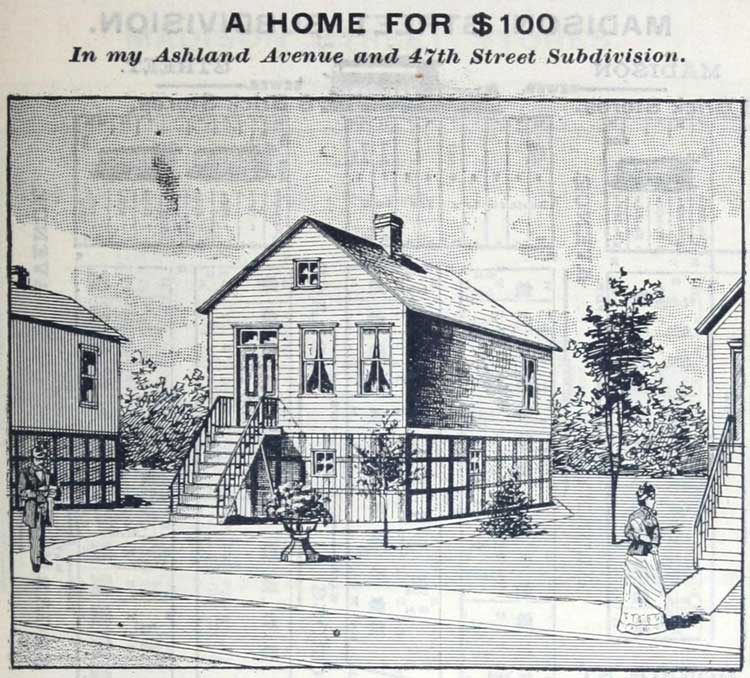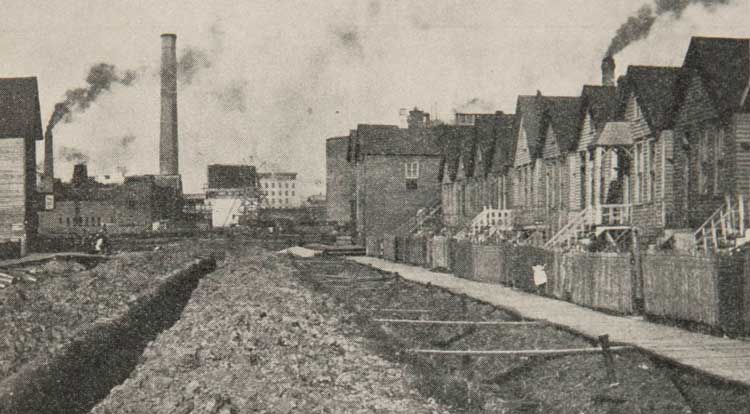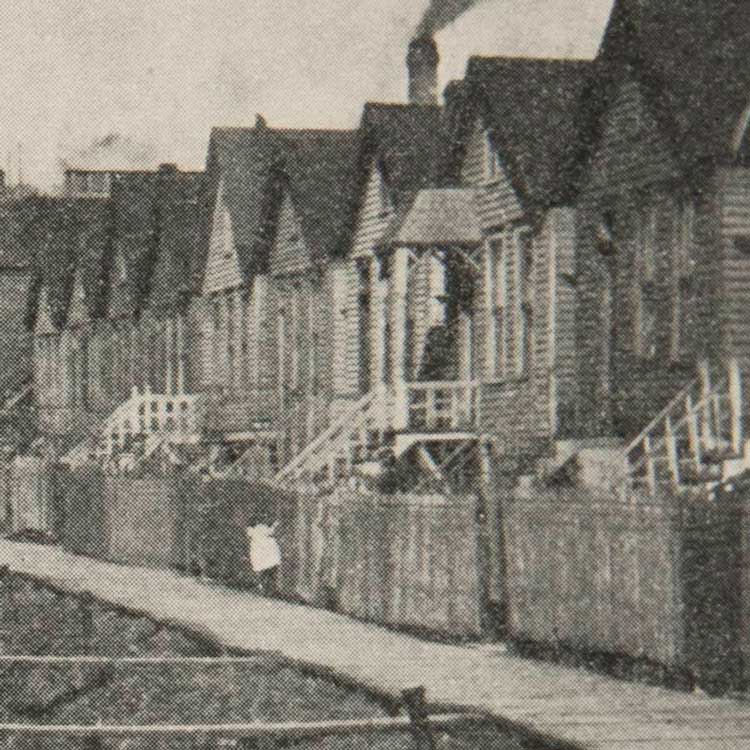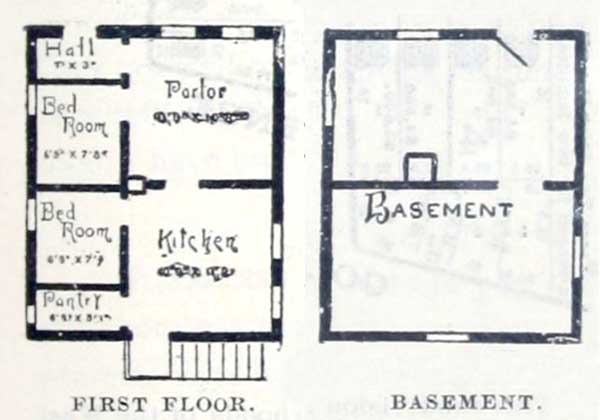
SPRING 2025 — NEWS FROM THE CHICAGO WORKERS COTTAGE INITIATIVE
Cottage Home in Back of the Yards
Chicago workers cottages were built as affordable houses back in the late 1800s to early 1900s. But some cottages were cheaper than others. Developer Samuel E. Gross built thousands of cottages in numerous subdivisions across the city. Gross advertised his projects in illustrated booklets with idealized images of quiet streets of snug cottages surrounded by young trees and space for a garden. The houses in his Back of the Yards subdivision sold for roughly $1100 with a $100 down-payment.
A photograph from 1901 shows what the street looked like in reality:
Gross built this row of fourteen woodframe cottages on Laflin St in the spring of 1888. At the end of the street beyond a corner saloon is a cabbage field and beyond that the vast complex of meatpacking plants next to the Stock Yards. The cottages Gross sold were very basic houses, with an unfinished basement and without indoor plumbing. It was up to the buyer to add these expensive amenities. In the working-class Back of the Yards neighborhood, many homeowners put off the expense of such improvements for years. In the photo, the street appears to be finally getting a sewer or water main installed, some dozen years after the houses were built. Housing advocates struggled for decades to get the city to improve conditions in the area, pave the streets and install proper drainage instead of the rough ditches seen in the photo.
Though homeownership was a hard-won goal for many laborers in the early 1900s, on this street few families stayed long. Only a few of the families who first bought houses from Samuel Gross in 1888 were still living there in the 1900 census. William Scholes worked as a laborer at the nearby Stock Yards, like most everyone on the street. He and his wife Elizabeth apparently had no children, and instead invested in a porch over the front door of the house at 4523 S. Laflin St where they lived for almost two decades.
The girl playing by the fence in the photo may be three-year old Elizabeth Brennock who lived in the house at 4527 on the right with her older brother and sister, parents and a border whose rent helped pay the mortgage. Most of the other houses on the block were equally crowded, with four to five or more children, parents and in-laws. As built, Gross' cottages had two bedrooms and were about 500 square feet or less.
Meat-packing jobs at the Stock Yards increased in first decades of the 1900s and more housing was needed. One-by-one the little Gross cottages were replaced by larger frame two-flats to accommodate more workers and their families. After the boom years of World War I, meat-packing production declined and the largest of the plants closed in the 1950s and 60s. Since then, many old houses on the street have been torn down.
Surprisingly, one cottage survives from the original row of fourteen Gross cottages built more than 135 years ago. The cottage to the left of the porch house, at 4521, is still standing and appears to be only slightly changed from its original footprint. With the porch cottage next door demolished long ago, it now has a bit of green space to match that idealized illustration in the original sales brochure.
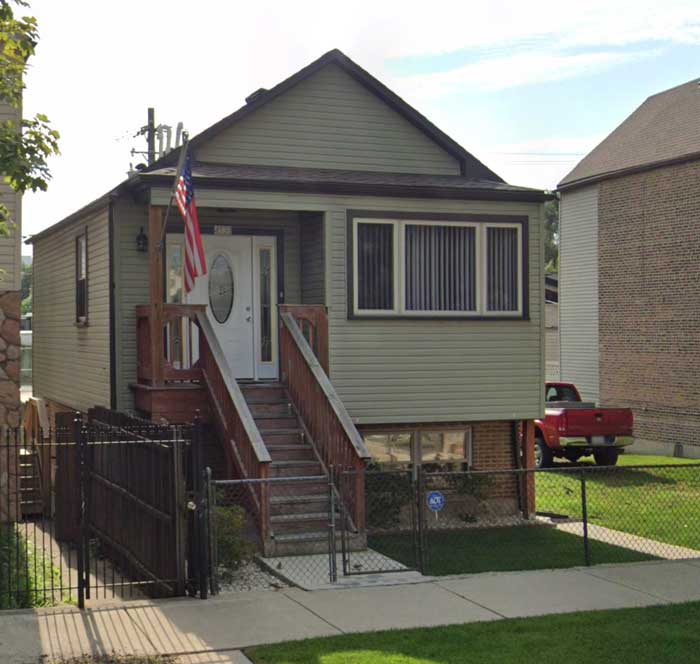
Read more about our survey of cottages in Back of the Yards
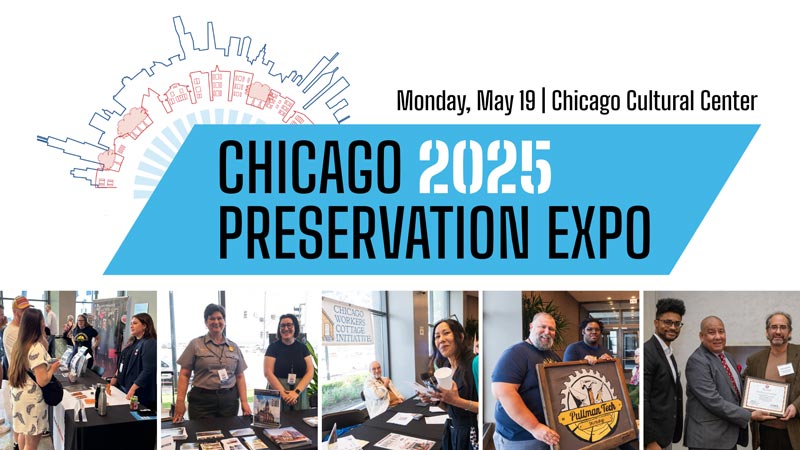
Chicago Preservation Expo
The Chicago Workers Cottage Initiative will be participating in the Chicago 2025 Preservation Expo on Monday May 19 from 4 to 8pm at the Chicago Cultural Center. The event celebrates National Historic Preservation Month, bringing together preservation organizations and trades experts specializing in historic preservation. Stop by to chat and meet other Chicagoans interested in preserving what makes our great city unique!
Tickets are free and available through the City of Chicago website.
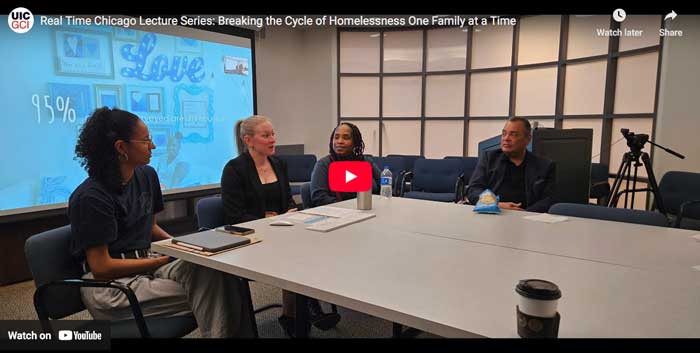
Real Time Wrap-Up
A big thank you to UIC's Great Cities Institute for hosting the fourth and final Real Time Chicago Lecture on April 30th, featuring the NHP Foundation which oversees over 8,000 affordable housing units nationwide. Their program Operation Pathways provides services to help low-income residents to achieve education, financial and personal goals.
The lecture series was co-hosted by the Chicago Workers Cottage Initiative and Great Cities Institute to spotlight a variety of housing service organizations in Chicago:
January 1 - Spanish Coalition for Housing
February 19 - Chicago Bungalow Association
April 9 - Digs with Dignity
April 30 - NHP Foundation
If you missed attending, you can find more information and watch recordings of the presentations on the GCI website.
We hope to partner again with the Great Cities Institute in the fall to feature other Chicago housing organizations. Stay tuned!
Copyright © Chicago Workers Cottage Initiative
Follow CWCI on ![]() Instagram —
Instagram — ![]() Facebook —
Facebook — ![]() LinkedIn —
LinkedIn —  Bluesky
Bluesky
 Join the Chicago Workers Cottage Initiative mailing list - unsubscribe
Join the Chicago Workers Cottage Initiative mailing list - unsubscribe

